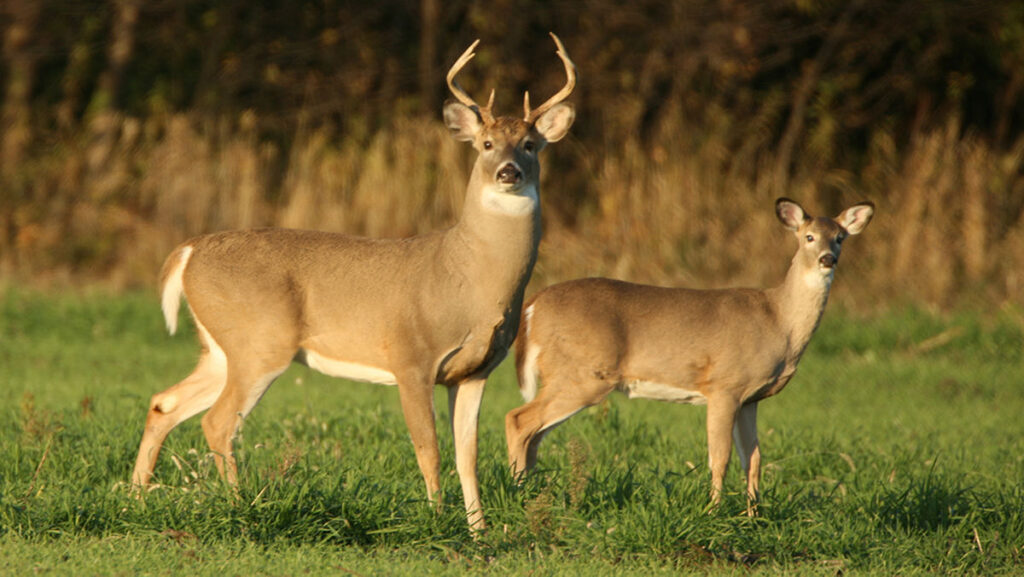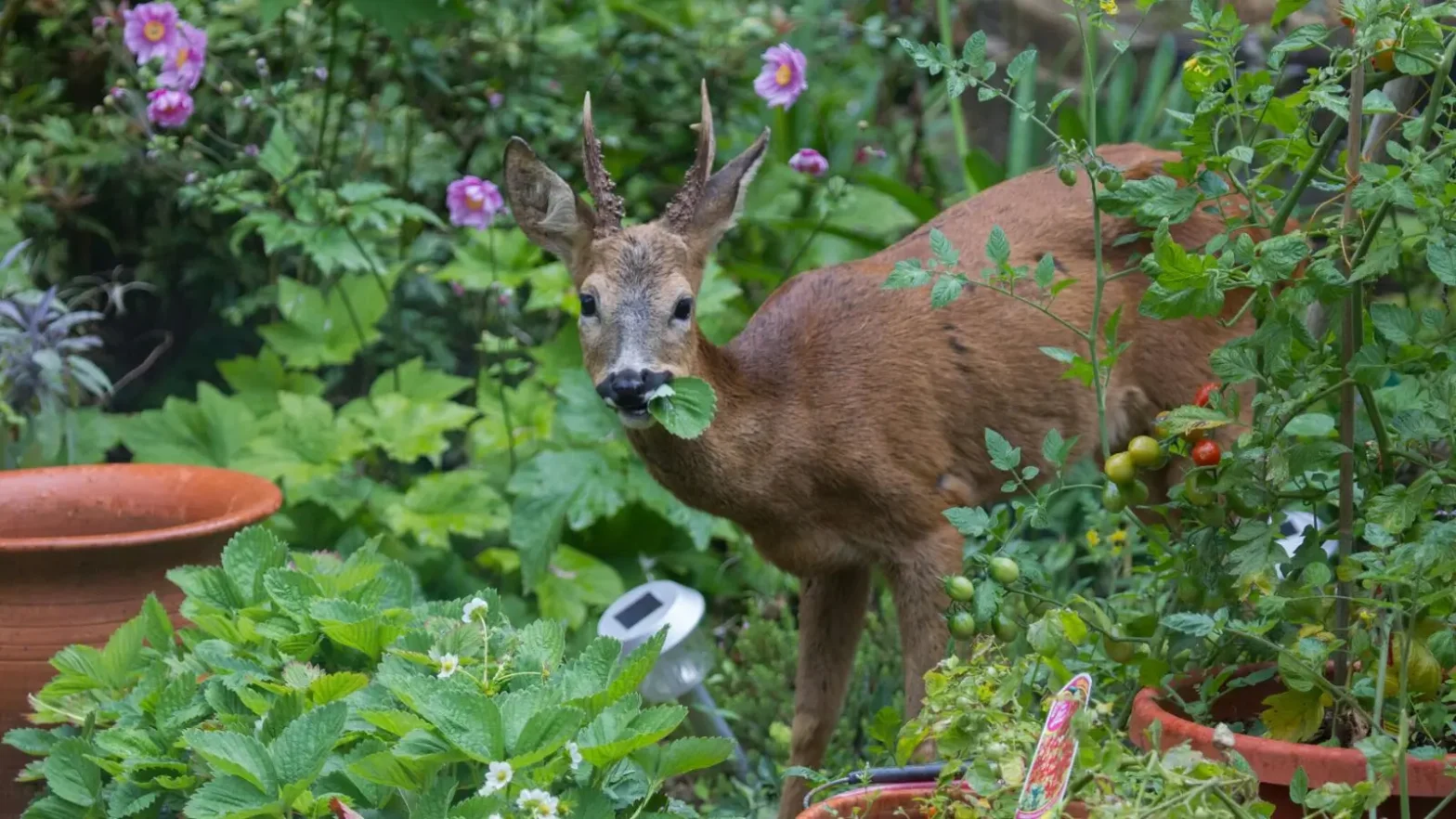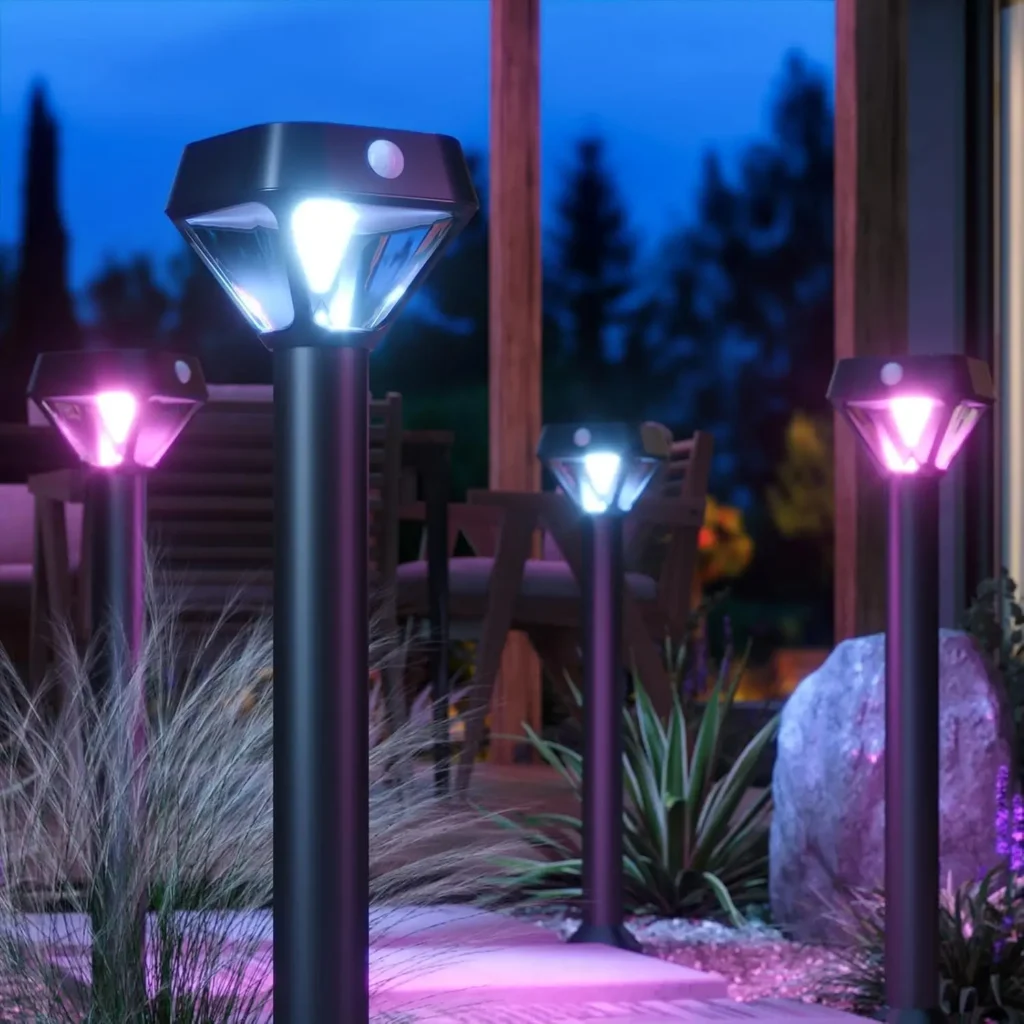If you live in a deer-prone area, you know how frustrating it can be to see your carefully cultivated vegetables chewed up overnight. Deer may look graceful and harmless, but to gardeners, they can be a persistent nuisance. Learning how to keep deer away from vegetable garden spaces is essential for protecting your harvest and ensuring that your hard work doesn’t go to waste.
Whether you’re dealing with a small backyard plot or a large homestead garden, deer can sniff out tender greens, beans, and fruits with uncanny precision.
Unfortunately, a single visit can cause extensive damage, sometimes destroying an entire season’s worth of work. But don’t lose hope—there are proven strategies that work.
In this guide, you’ll learn not only how to keep deer away from your garden, but also how to keep deer out of vegetable garden areas using natural repellents, fencing options, clever planting techniques, and more.
This post is packed with practical tips, backed by gardeners who’ve successfully turned their plots into deer-proof zones.
Let’s start by understanding the enemy.
What Animal is a Deer?

Deer are hoofed, herbivorous mammals that belong to the Cervidae family. Known for their agility and speed, deer are native to many parts of the world, with species like the white-tailed deer, mule deer, and black-tailed deer being common in North America.
Characterized by slender legs, large ears, and a powerful sense of smell, deer are browsers—meaning they feed on leaves, stems, fruits, and vegetables.
Male deer, or bucks, typically grow antlers each year, which are shed in winter. Females, known as does, are usually smaller and care for their young, called fawns, in wooded or brushy areas.
While they’re a beautiful part of North America’s wildlife, deer have increasingly encroached on residential areas due to urban sprawl and habitat loss.
This increased contact with human environments has made vegetable gardens a frequent target of their foraging.
Why Do Deer Roam American Gardens?
Deer invade American gardens mainly in search of food. As urban development pushes into wooded areas, the natural habitats and food sources of deer are disrupted.
Gardens offer an easily accessible buffet of soft, nutrient-rich plants that are often more appealing than what’s found in the wild.
Vegetables like lettuce, peas, beans, carrots, and sweet corn are especially attractive to deer. Additionally, flowering plants and fruit trees provide variety and nutrition.
In dry seasons or during harsh winters, when food in the wild becomes scarce, deer are even more likely to brave populated areas.
Beyond hunger, deer are also creatures of habit. Once they identify a reliable food source—like your garden—they tend to return unless actively discouraged.
They often roam during dawn or dusk when human activity is low, making detection and prevention a challenge.
How to Identify Deer Damage in Your Garden
Before you begin protecting your garden, you must be sure you’re actually dealing with deer. Deer damage is easy to misidentify, especially when other animals like rabbits or groundhogs are also present. Here’s how you can spot it.
Signs of Deer Activity
Deer don’t nibble neatly like rabbits; they tear and yank plants. You’ll often notice jagged or ripped edges on leaves and stems. Their preferred targets include young shoots, tender leaves, and flowering plants. If you see the tops of your beans or peas missing, deer are likely culprits.
Footprints are another giveaway. Deer tracks are heart-shaped and about 2 to 3 inches long. You might also notice smooth, narrow pathways where deer consistently move through your yard—these are called “deer trails.”
In some cases, you’ll also find droppings—small, dark, pellet-like clusters. These can appear around feeding zones or resting areas.
Finally, if you grow fruit trees, you might notice bark stripping or antler rubs on tree trunks—especially in late summer and fall.
Top Natural Ways to Keep Deer Out of Your Vegetable Garden
Not every gardener wants to install a giant fence or use chemical repellents. Fortunately, nature offers a few clever tricks of its own.
Here are the top organic and natural methods to help you keep deer away from your vegetable garden without harming the environment.
Use Scent Deterrents
Deer have an extraordinary sense of smell, and strong odors can discourage them.
Human hair, garlic clips, and bars of Irish Spring soap (pictured above) tied to stakes around the garden are popular folk remedies that actually work in many cases.
You can also create homemade sprays using garlic, hot pepper, or rotten eggs mixed with water.
Rotating these scents is important. Deer may become accustomed to one particular smell, so changing it every few weeks increases your success.
Make Use of Motion and Sound
Wind chimes, aluminum foil strips, pie pans, and even motion-activated sprinklers can startle deer and disrupt their browsing. These visual and audio deterrents are especially effective at night when deer are most active.
Add mirrors or old CDs to reflect light—it creates motion and shine that deer don’t like. Some gardeners also use solar-powered motion lights (pictured above) that flash or activate sound when movement is detected.
The Best Deer Fencing Options for Long-Term Protection
If you face frequent deer issues, fencing is often the most reliable solution. But not all fences are created equal. Let’s examine the most effective fencing styles to protect your crops in the long term.
Physical Fencing Styles That Work
A standard 4-foot fence won’t do much—deer can easily leap over fences up to 8 feet. If you’re serious, opt for a barrier at least 7–8 feet tall. Wire mesh, electric fencing, or tall wooden fencing all provide solid physical deterrence.
Double fencing is another clever approach. Deer have poor depth perception and are hesitant to jump into confined spaces. By placing two shorter fences (say 4 feet tall) about 3–5 feet apart, you create an optical illusion that deer won’t risk navigating.
If aesthetics matter, use deer netting or transparent mesh around your crops. These can be less visually intrusive but still highly effective when installed correctly and regularly maintained.
Plants That Naturally Repel Deer
Choosing the right plants for your garden border or landscaping can significantly reduce deer invasions. Some plants are less palatable or even toxic to deer.
Here’s how you can use plant selection as a natural barrier.
Best Deer-Repellent Plants
Plants with strong fragrances or fuzzy, bitter leaves are usually unappealing to deer. Herbs like rosemary, lavender, sage, mint, and oregano are excellent for repelling them naturally while also benefiting your garden ecosystem.
You can also plant deer-resistant flowers like marigolds, daffodils, foxglove, yarrow, and poppies. These not only keep deer at bay but also add color and support pollinators in your garden.
Use these plants as perimeter guards around more vulnerable vegetables. This layered approach adds beauty and deterrence without resorting to chemicals or high-maintenance fencing.
DIY Deer Repellents That Actually Work
If you’re a hands-on gardener or enjoy homemade solutions, DIY deer repellents can be both cost-effective and surprisingly powerful.
Here’s how to make and use your own mixes.
Homemade Repellent Recipes
A classic homemade deer repellent includes mixing 1 egg, 1 tablespoon of dish soap, 1 cup of milk, and 4 cups of water. Shake well and spray around plants every few days.
Another mix uses crushed garlic, hot pepper flakes, and water, steeped overnight and strained before use.
To increase staying power during rain, you can add a bit of vegetable oil or a few drops of glue to help the spray adhere to leaves and stems.
Apply repellents in the early morning or evening and reapply after rain. Rotate recipes to prevent deer from becoming accustomed. These mixtures work best when used consistently and in combination with other deterrent methods like fencing or noise.
Common Mistakes Gardeners Make When Dealing with Deer
Even experienced gardeners make missteps that attract deer. Avoiding these common errors can help you make your anti-deer strategy far more effective.
Underestimating Deer Persistence
Many people assume that a one-time deterrent is enough. But deer are persistent and curious. If they’re hungry enough, they’ll test your defenses repeatedly. That’s why combining multiple deterrents—fencing, repellents, and plant selection—is critical.
Another frequent mistake is leaving pet food or compost bins uncovered. These attract deer (and other pests) to your garden space.
Also, planting deer-favorite crops like tomatoes or strawberries near the edge of the garden without any protection is an open invitation.
Lastly, some gardeners install fencing that’s too short, use weak materials, or forget to close garden gates—one small lapse can mean a night of destruction.
Consistency, vigilance, and a layered approach offer the best results in keeping deer out for good.
FAQs About Keeping Deer Away from Gardens
Q: How can I keep deer out of my garden?
To effectively keep deer out of your garden, you need a layered approach that combines physical barriers, scent and motion deterrents, and smart planting. Start by installing a tall fence—preferably 7 to 8 feet—to physically block access.
Complement that with natural repellents like garlic sprays, hot pepper mixes, or strong-smelling plants such as rosemary and lavender. Motion-activated sprinklers and reflective objects (like CDs or foil) can scare them away.
Additionally, plant deer-resistant flowers and herbs around the perimeter of your vegetable garden to create a natural buffer.
Avoid common mistakes like leaving gates open or using a single method expecting long-term results. Consistency and variety in your deterrent strategy are key to long-term success. When in doubt, rotate your methods to keep deer guessing—and out of your garden.
Final Thoughts on Protecting Your Garden from Deer
Dealing with deer may seem overwhelming at first, but with the right strategies in place, you can reclaim your garden and enjoy a productive growing season. In this guide, we explored how to keep deer away from vegetable garden areas through a blend of natural deterrents, smart fencing, and plant-based strategies.
We also looked at why deer target gardens in the first place, how to recognize deer damage, and what common mistakes to avoid. From DIY repellents to plants that repel deer, you now have the tools to build a garden that’s not just deer-resistant—but thriving.
Quick Recap:
- Identify deer activity early
- Use strong scents, motion, and sound deterrents
- Install tall or double-layered fences
- Plant deer-repelling herbs and flowers
- Mix and rotate DIY repellents for best results
Ready to protect your garden the smart way?
Don’t let your harvest become a midnight snack! Act today using these proven tips and finally enjoy a deer-free vegetable garden. Start now and keep your crops safe all season long!




